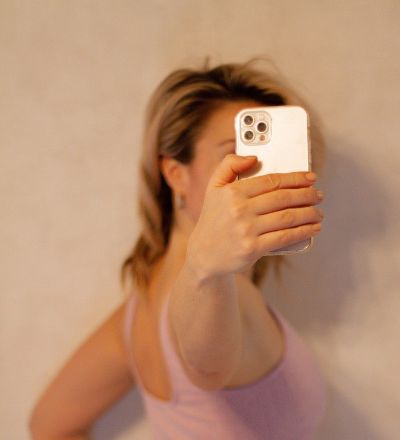Exercise and BDD
Exercise and coping with body dysmorphic disorder

There are some days when I feel so much stress and anxiety that I want to stay in bed. I think about the many serious issues facing the world right now. I find myself worrying about the pandemic, political and cultural upheaval, wildfires, climate change, and a planet that seems to be under attack and is fighting back.
In Colorado, like California, we have been battling several wildfires throughout the month. Unlike California, an early snowfall last week helped put a damper on some of the wildfires. Today the sky is clear of smoke and there is a slight breeze. The cooler weather seems to beckon the fall foliage that will arrive soon.
I understand that having body dysmorphic disorder (BDD) can make enjoying life difficult. I suffered from BDD for 20 years before getting treatment and recovering. However, I still worry and get anxious about world events and concerns about my future. Exercise is one method I use to alleviate feelings of anxiety when they arise.
My experience with exercise has been both positive and negative. I love being outdoors hiking, cycling, and running when the weather permits. However, there are days in the gym when I compare my body to those of younger women and get frustrated. I try to remind myself to avoid social comparison and focus on my workout goals.
In this blog post, I will discuss the benefits of daily exercise for individuals with BDD. I will share my experience using exercise to feel better physically, mentally, and emotionally. I will also discuss some issues that people with BDD may face when exercising.
So, what motivates me to exercise when I am feeling stressed and worried? First, a persistent and loud “meowwww” from my cat Misti reminding me that she wants a walk. I usually start my day with breakfast and then take Misti for her walk.
If you are wondering, walking a cat is not the same as walking a dog. Sometimes we walk around the block and she takes the lead. Other days she wanders in the field behind the house looking for mice and snakes. Chasing neighborhood squirrels and bunnies is another favorite morning activity (for her, not me).

Then, after we come back from her walk, I get ready for my daily exercise routine. I choose my activity based on the season. In the winter I walk outdoors or run on a treadmill. During the summer I hike or ride my bicycle.
During the spring and fall my activities vary depending upon the weather.
I started my exercise routine in college by jogging or walking around the Mount Holyoke College campus every day. When I moved to Somerville, near Boston, I jogged around Tufts University during the week. Then, on the weekends, I drove to Concord and did an hour run in the morning. During the summer, I would also swim or sit at Walden Pond in the afternoon.
My running routine helped me to get out of my apartment and away from the mirror. I was still struggling with BDD symptoms throughout my twenties. Getting outdoors focused my attention away from my face and onto my surroundings. Plus, the fresh air and exercise made me feel like I was taking care of myself in a positive way. When I turned 30, I moved to Colorado to be closer to family and friends.
I still struggled with BDD symptoms after moving to Colorado. However, hiking in the mountains provided a respite from my appearance obsessions. Since I was not able to see my reflection while hiking, I didn’t obsess about my face or nose.
My friends encouraged me to start running trail races. Running shorter races led to marathons and eventually I ran some trail ultramarathons. An ultramarathon is any distance greater than a marathon. I managed to finish a 24-hour endurance race by running (and walking) a total of 76 miles. I kept going despite sometimes wanting to quit. My goal was to finish at least 50 miles that day.
Having a goal to recover also helped me when I was struggling with my BDD symptoms. Recovery was not easy and took continued effort and a will to succeed. I kept going to therapy and taking medication for two years before I started to feel better.
I recommend that individuals suffering from BDD symptoms consider adding exercise to their recovery routine. The exercise you choose should be something that you enjoy, such as walking your dog/cat, hiking, cycling, dancing, swimming, team sports, weight lifting, yoga, martial arts, or any other activity that provides physical exertion, focus, and concentration.
There are many benefits to adopting a regular exercise routine, especially for people suffering from feelings of depression and anxiety. According to an article on the American Psychological Association website (Weir, 2011), researchers at Boston University and Duke University found evidence that exercise helps to alleviate symptoms of depression in individuals who maintain or initiate an exercise program.

James Blumenthal, PhD, a clinical psychologist at Duke University, concluded: “There’s good epidemiological data to suggest that active people are less depressed than inactive people. And people who were active and stopped tend to be more depressed than those who maintain or initiate an exercise program” (Weir, 2011, para. 8).
Regular exercise can also help alleviate feelings of stress and anxiety. A study by Smits et al., (2011) found that people with high anxiety sensitivity who also reported high activity levels were less likely to panic than subjects who exercised infrequently (Psychosomatic Medicine, 2011). Thus, physical exercise could help to alleviate panic attacks in individuals who experience anxiety disorders.
There are many benefits to adding exercise to your daily routine. However, exercise can also be used in a negative manner by people with BDD symptoms. Exercise addiction and muscle dysmorphia are two conditions that can arise when the desire to exercise is fueled by an obsession to change one’s appearance.
When I exercise, I enjoy getting stronger, leaner, and more muscular. But that is not the reason that I exercise every day. I exercise to elevate my mood, to relieve stress, and to take a break from work. I do not try to change my appearance. My goal is to spend quality time with my cat, my friends, or with myself.
According to a study in Frontiers for Sports and Active Living (Trott et al., 2020, para. 2), exercise can become “obsessive, compulsive, or addictive, to the point where the exerciser experiences negative physiological and psychological symptoms, including withdrawal symptoms upon cessation, training through injury, and the detriments of social relationships.” Being addicted to exercise means that you are unable to take days off when injured and that your personal friendships and relationships suffer due to your obsession with exercising.
Spending excessive amounts of time at the gym lifting weights combined with dieting can be symptoms of muscle dysmorphia (MD). The International OCD Foundation BDD website describes the negative impacts that MD can have on individuals: “People with MD exercise excessively, spending many hours at the gym, often risking injuries, or making them worse by refusing to stop, even when in significant pain” (Olivardia et al., 2020, para. 5).
Be wary if you exercise for hours every day to look thinner, appear more muscular, or to alter some body part that you hate. Only you will know your motivation for exercising. If you are obsessed with altering your appearance before, during, and after your workout, stop. If your daily workout leads to injuries, social isolation, or depression, get help for your BDD symptoms.
Exercising can be beneficial if your goals are to alleviate stress, improve your mood, get healthier, and enjoy the outdoors. Exercising will not always be easy. There are days when I don’t want to exercise due to being tired, bored, or busy with work. However, even a short walk (30 minutes) helps to elevate my mood and improves my focus and concentration.
If you want more advice about recovery and to share your story, please visit my Recovery from BDD page on Facebook or contact me at eva@recoveryfrombdd.
I wish you much success with your exercise routine and recovery from BDD!
References:
Weir, K. (2011). The exercise effect. American Psychological Association, 42(11). https://www.apa.org/monitor/2011/12/exercise
Trott, M., Yang, L., Jackson, S. E., Firth, J., Gillvray, C., Stubbs, B., & Smith, L. (2020, July 10). Prevalence and correlates of exercise addiction in the presence vs. absence of indicated eating disorders. Frontiers in Sports and Active Living. https://www.frontiersin.org/articles/10.3389/fspor.2020.00084/full
Olivardia, R., Blashill, A., & Hoffman, J. (2020). Muscle dysmorphia. International OCD Foundation. https://bdd.iocdf.org/expert-opinions/muscle-dysmorphia



